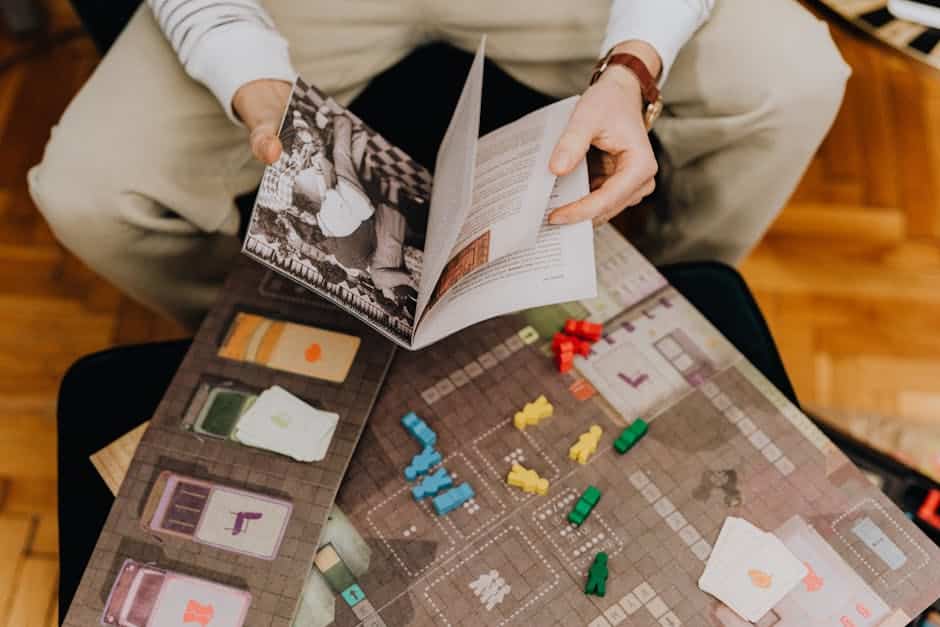How to Make Your Own Board Game: A Step-by-Step Guide 🎲
Board games have been a source of joy and entertainment for people of all ages for centuries. Whether you’re a board game enthusiast or someone with a creative spark looking to bring a unique idea to life, designing your own board game can be incredibly rewarding. In this guide, we’ll walk you through the essential steps to create a board game that’s not only fun to play but also reflects your personal creativity and vision. Let’s dive in! 🌟
Table of Contents
1. Introduction
2. Finding Your Inspiration
3. Designing the Game Mechanics
4. Creating the Game Theme
5. Prototyping Your Board Game
6. Playtesting and Refining the Game
7. Finalizing the Design and Production
8. Conclusion
9. FAQs
Finding Your Inspiration 🌈
Before you start crafting your board game, it’s important to find inspiration. Think about the games you love and what makes them special. Do you enjoy strategic games like Chess or thematic ones like Catan? Consider what elements you want to incorporate into your game. Perhaps you want to create a family-friendly game with simple rules or a complex game that challenges players’ strategic thinking. Inspiration can come from anywhere – books, movies, or even a walk in the park! Let your imagination run wild. 🚀
Designing the Game Mechanics ⚙️
The mechanics of your game are the rules and systems that dictate how the game is played. Start by outlining the core objective of your game. What do players need to do to win? Once you have a clear objective, you can start building the rules around it.
Consider the following aspects:
Game Flow: How does the game progress from start to finish? Is it turn-based or does it involve simultaneous actions?
Player Interaction: Will players compete against each other, work cooperatively, or a combination of both?
Components: What physical elements will the game include (cards, dice, tokens)?
Remember, your mechanics should be engaging and intuitive, allowing players to quickly grasp how to play while offering depth for strategic play. 🧠
Creating the Game Theme 🎨
Now, let’s bring some life into your game with a compelling theme. The theme adds flavor and context, making the experience more immersive. Consider what setting or story will captivate your audience. Will it be a magical fantasy land, a historical battle, or a futuristic space adventure?
Your theme should align with your mechanics. For example, a game about exploring uncharted islands might involve map tiles, while a game about a detective solving mysteries could use clue cards. The theme is your chance to add artistic elements like illustrations and narratives that will draw players into your world. 🌍
Prototyping Your Board Game 🛠️
With your mechanics and theme in place, it’s time to create a prototype. This doesn’t have to be perfect – it’s a rough draft that will evolve. Gather basic materials like paper, cardboard, and markers to create your initial components.
Focus on functionality rather than aesthetics. The goal is to have a working model to test and refine. As you prototype, keep note of any issues or areas for improvement. This is where your game begins to take shape, and you’ll discover what works and what doesn’t. ✍️
Playtesting and Refining the Game 🎮
Playtesting is a crucial step in game development. Invite friends, family, or fellow gamers to play your prototype. Observe how they interact with the game and gather feedback on the mechanics, balance, and overall enjoyment. Are there parts of the game that are confusing? Is there a particular aspect that players love?
Be open to criticism and ready to iterate. This might mean tweaking rules, redesigning components, or even changing major parts of the game. The more you test, the better your game will become. 🧩
Finalizing the Design and Production 🎨
Once your game has been refined through playtesting, it’s time to finalize the design. Invest in quality materials and professional artwork if possible. You want your final product to be visually appealing and durable.
Consider how you will produce the game. Will you create a limited number for personal use, or are you aiming for a broader market release? Platforms like Kickstarter can help fund larger production runs and bring your game to a wider audience. 📈
Conclusion 🌟
Creating your own board game is a journey of creativity, problem-solving, and perseverance. From the initial spark of inspiration to the final polished product, each step is an opportunity to learn and explore. Whether your game becomes a family favorite or the next big hit, the process itself is incredibly fulfilling. Now, gather your friends, roll the dice, and let the games begin! 🎉
FAQs ❓
Q: How long does it take to create a board game?
A: The timeline can vary greatly depending on the complexity of the game and your dedication. Some games might take a few months, while others could take years to perfect.
Q: Do I need to be an artist to design a board game?
A: Not at all! While having artistic skills can be helpful, many successful game designers collaborate with professional artists to bring their vision to life.
Q: What should I do if I’m stuck in the design process?
A: Take a break and seek inspiration from other games, stories, or nature. Sometimes stepping away can provide new insights and ideas.
Ready to embark on your board game creation journey? Remember, every great game began with a simple idea. Good luck and have fun designing! 🎨✨
